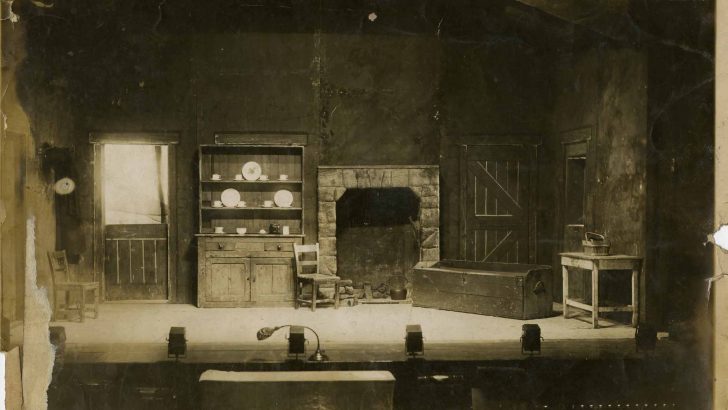An Underground Theatre: Major Playwrights in the Irish Language 1930-1980
Philip O’Leary (University College Dublin Press, €50.00)
Anthony Roche
This important book is not a history of Irish language drama; that already exists in Pádraig Ó Siadhail’s 1993 Stair Dhrámaoícht na Gaeilge 1900-1970. Rather, Philip O’Leary critically highlights five significant playwriting careers in Irish: Mairéad Ní Ghráda; Séamus Ó Néill; Eoghan Ó Tuairisc; Seán Ó Tuama and Criostóir Ó Floinn.
No one-off plays in Irish, such as Brendan Behan’s 1956 play, An Giall [The Hostage], are dealt with. Rather, O’Leary wants to show that a sustained career as an Irish language playwright is possible, despite all of the forces ranged against it.
The three greatest and most recurrent obstacles are: small audiences, with variable knowledge of Irish; the dearth of original plays in the Irish language and the preference of theatre managements for translations of already well-known plays into Irish; the lack of theatres.
For all of the difficulties outlined here, I was struck by the fact that many of the plays discussed in the book did receive initial productions.
Maligned policy
There were three main sources of support during the period covered: Ernest Blythe’s often unjustly maligned policy of promoting plays in the first official language at the Abbey and Peacock and the arrival of Tomás Mac Anna in 1947 as producer of new plays; the sustained support by Gael Linn for Irish language plays at the Damer Hall from 1956 until 1970, which saw a championing of more radical plays than those often favoured by the more conservative Abbey. And Taidhbhearch na Gaillimhe where, from its founding in 1928 on, there was a sustained commitment to plays in Irish.
The first chapter is on Mairéad Ní Ghráda, the only woman of the five playwrights and the greatest of them.
Her 1964 play An Triail [The Trial] is one of the few Irish language plays to have achieved widespread prominence (I hope it can survive being put on the Leaving Cert. Irish course).
An Triail is still vibrant and contemporary over 50 years after its premiere at the Damer, where it was directed by Tomás Mac Anna and starred first Caitlín Maude and then Fionnuala Flanagan in the lead role. I had always wondered what came earlier in Ó Gráda’s career, and O’Leary’s wonderful chapter on her answers that question fully.
Working closely with Mac Anna, she was never anything but experimental, working against the narrow realism of the English language Irish stage to open up new areas of expression. I was struck by how many of the more experimental features of more recent English language Irish playwrights were first anticipated by Ó Gráda.
In 1945’s Giolla an tSolais [Messenger of Light], for example, where the devil appears in modern guise and there is “only one character who knows just who this visitor is”, Conor McPherson’s 2005 play, The Seafarer, came to mind.
The expressionistic aspects of An Triail receive sustained attention, as you would expect, though O’Leary concludes that finally Ní Grádha and Mac Anna wanted the play to be entertaining. I’m not sure Bertolt Brecht didn’t feel the same – as witness his championing of Charlie Chaplin’s physical mime as a model of great acting.
The remaining four playwrights in the book break along the central divide of all writing in Irish: between native speakers from the Gaeltacht and urbanites who have acquired Irish educationally.
Séamus Ó Néill and Seán ÓTuama fall into the first category. Ó Néill, a Catholic from the North, is at his most interesting when he makes his protagonists Protestant; his plays also sound an ambitious note that is heard throughout the book.
Ó Tuama’s first play, Gunna Cam agus Slabhra Óir [Broken Gun and Golden Chain] is described by O’Leary as ‘his masterpiece, the finest history play ever written in Irish’. He likens the play to Brian Friel’s Translations but, in its account of a Gaelic chieftain in the 1550s submitting to Queen Elizabeth, I was even more minded of Friel’s 1988 play about Hugh O’Neill, Making History.
The other two playwrights write in both Irish and English. One of them not only adopts different names when he does so, Eoghan Ó Tuarisc and Eugene Watters, but this in turn informs the characteristic dualism of his plays: “body/spirit, concrete/abstract, death/life, materialism/idealism, convention/freedom, individualism/universality, terror/beauty, and more”.
Ó Floinn (the only playwright still living) is the most radical, witty and iconoclastic. Both Ó Tuarisc and Ó Floinn are anything but respectful to the Irish language, playing with its possibilities and opening it up to outside influence.
The book concludes with a seven-page ‘afterword’, which can hardly do justice to the important work of Amharclann de hÍde in the 1990s and to the plays of such writers as Antaine Ó Flatharta and Celia da Fréine. But that’s my only criticism.
Achievements
For the most part, Philip O’Leary takes the time and care to bring us deep into the heart of the plays he discusses, honoring their ambitions and achievements while not shrinking from discussing shortcomings.
With the emphasis on women playwrights now taking hold at the Abbey Theatre, it would be wonderful to think that the rich body of Ó Grada’s plays might be explored in production (and with English sub-titles).
Writing in Irish has never been popular nor profitable, but it still manages to persist and continue against all the odds, buíochas le Dia. Long may it do so.



